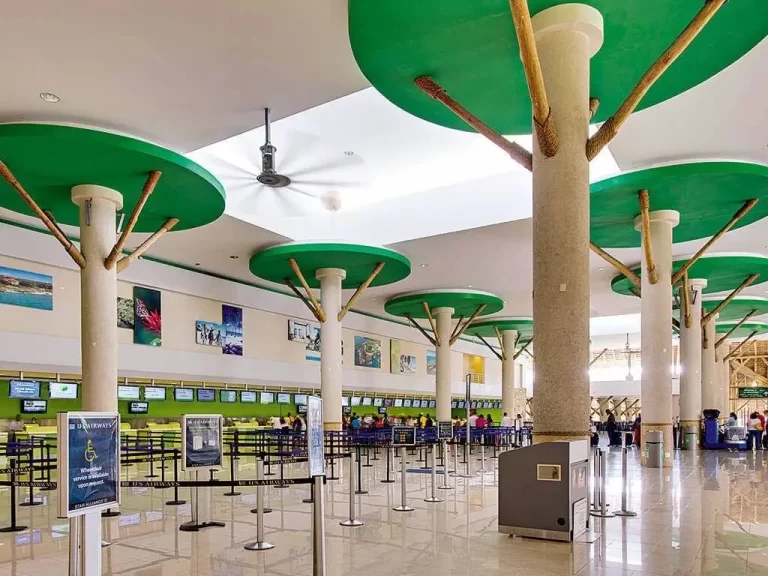El Gobierno dominicano, a través del Ministerio de Energía y Minas, ya tiene la propuesta para reformar la Ley 146-71 sobre la minería dominicana, la cual se espera que sea sometida por el presidente, Luis Abinader. La información fue ofrecida en el Desayuno del Listín Diario por el ministro de Energía y Minas, Antonio Almonte, quien agrega que Abinader fue quien pidió que en el corto plazo se presentara la actualización de esta ley para alcanzar una minería responsable en el país.
“Hay diferentes aspectos. La ley minera se produce en el 1970 cuando no existía, por ejemplo, el Ministerio de Energía y Minas. Hay una serie de procesos que tiene que ver con la permisología, con las compras y concesiones y las características de responsabilidad que tenían que ser revisadas y ajustadas a la nueva realidad”, expresó Almonte en el encuentro donde estuvo acompañado del viceministro de Energía y Minas, Rafael Gómez.
La nueva ley de minería tendría temas que guardan estrecha relación con la responsabilidad del medio ambiente y qué sigue después que termina el ciclo de vida de una explotación de yacimientos, así como cuáles son las medidas que deben tomarse para remediar el área afectada.
Según Almonte, la reforma también consideraría el movimiento social y ambientalista que no existía antes y que ahora el Gobierno cree que es bueno que se rija por una regulación que implique fortalecimiento de las responsabilidades de las empresas dedicadas a la actividad minera.
“Hay una Dirección General de Minería que la Ley 100-13 prevé debe ser parte del ministerio, pero hay aspectos que tienen que hacerse por ley para que pueda formalizarse y así compactar toda la gestión de asuntos mineros en el país”, aclaró el funcionario.
Explotación yacimientos
Almonte destacó que la explotación de riquezas minerales existentes en el subsuelo tiene que evaluarse conjuntamente con cuáles son las zonas protegidas, áreas o recursos naturales que deben ser intocables. “No todos los yacimientos minerales que existan pueden ser explotados. Si usted tiene un yacimiento de oro, de petróleo o de gas natural que se descubre que está debajo del Palacio Nacional, posiblemente no vamos a destruir la capital para explotarlo. Hay que tomar en cuenta otras riquezas que también son importantes, como la ambiental y el agua”, consideró Almonte.
El titular de Energía y Minas opinó que el país debe abocarse a un estudio que le permita establecer con mayor criterio de ahora en adelante cuáles son y cuáles no áreas explotables en el país desde el punto de vista mineral, definición que debe hacerse bajo la base sensata de información técnica y científica seria y con el interés nacional.
Eje principal
En cuestiones de minería, una de las prioridades del Gobierno de Luis Abinader, de acuerdo con Almonte, es trabajar en la promoción de la instalación y el desarrollo de la actividad minera en el país, valorando que ya hay algunas en curso, así como la reactivación para la bauxita y tierras raras.
Recordó que en el primer trimestre del 2021 se espera que una empresa explore la presencia de hidrocarburos en San Pedro de Macorís, lo que no implicará la excavación de la tierra pues será a “mar afuera”, una exploración que se hará con buenos pronósticos.
El funcionario puntualizó que la hará una corporación exitosa que ha trabajado en proyectos de Inglaterra, Estados Unidos y otros países, lo que significa que es una empresa que tiene mucha tecnología. La otra razón para ser optimista es que hay varios estudios recientes publicados en revistas internacionales, y la tesis doctoral de un científico, que revelan la posibilidad de que haya hidrocarburos en San Pedro de Macorís.
Estudios Hidrocarburos
Varios estudios recientes publicados en revistas internacionales, y la tesis doctoral de un científico, revelan la posibilidad de que haya hidrocarburos en San Pedro de Macorís.
Evaluaciones
“La presencia de hidrocarburos no necesariamente significa la comercialización porque ya eso está sujeto a evaluaciones de otro tipo”, aclaró Almonte.
Áreas
Citó algunas áreas donde no hay explotación formal, pero sí estudios. Los posibles lugares son tierras raras en Pedernales, carbonato de calcio en Barahona, yacimientos en Loma Miranda, gas natural en San Pedro de Macorís, petróleo en Azua, oro e hidrocarburos en Ocoa y gas natural y carbón en Sánchez.
Fuente: Listin Diario[:en]The Dominican Government, through the Ministry of Energy and Mines, already has a proposal to reform Law 146-71 on Dominican mining, which is expected to be submitted by the President, Luis Abinader. The information was offered at the Listin Diario Breakfast by the Minister of Energy and Mines, Antonio Almonte, who adds that Abinader was the one who asked that the update of this law be presented in the short term to achieve responsible mining in the country.
“There are different aspects. The mining law was produced in 1970 when, for example, the Ministry of Energy and Mines did not exist. There are a series of processes that have to do with permitting, with purchases and concessions and the characteristics of responsibility that had to be reviewed and adjusted to the new reality, ”Almonte said at the meeting where he was accompanied by the Deputy Minister of Energy and Mines, Rafael Gómez.
The new mining law would have issues that are closely related to environmental responsibility and what follows after the life cycle of deposit exploitation ends, as well as the measures that must be taken to remedy the affected area.
According to Almonte, the reform would also consider the social and environmental movement that did not exist before and that now the government believes it is good that it is governed by a regulation that implies strengthening the responsibilities of companies engaged in mining activity.
«There is a General Mining Directorate that Law 100-13 foresees must be part of the ministry, but there are aspects that have to be done by law so that it can be formalized and thus compact all the management of mining affairs in the country,» the official clarified.
Exploitation of deposits
Almonte stressed that the exploitation of mineral wealth existing in the subsoil has to be evaluated together with which are the protected areas, areas, or natural resources that must be untouchable. “Not all the mineral deposits that exist can be exploited. If you have a gold deposit, oil, or natural gas field that is discovered to be under the National Palace, we may not be going to destroy the capital to exploit it. We must take into account other riches that are also important, such as the environment and water ”, Almonte considered.
The Minister of Energy and Mines said that the country should undertake a study that allows it to establish with greater criteria from now on which are and which are not exploitable areas in the country from the mineral point of view, a definition that must be made under the basis sensible of serious technical and scientific information and with the national interest.
Principal axis
In mining matters, one of the priorities of the Government of Luis Abinader, according to Almonte, is to work to promote the installation and development of mining activity in the country, assessing that there are already some in progress, as well as the reactivation for bauxite and rare soils.
He recalled that in the first quarter of 2021 a company is expected to explore the presence of hydrocarbons in San Pedro de Macorís, which will not imply the excavation of the land as it will be «offshore», an exploration that will be done with good forecasts.
The official pointed out that it will be done by a successful corporation that has worked on projects in England, the United States, and other countries, which means that it is a company that has a lot of technology. The other reason to be optimistic is that there are several recent studies published in international journals, and a scientist’s doctoral thesis, that reveals the possibility that there are hydrocarbons in San Pedro de Macorís.
Hydrocarbon Studies
Several recent studies published in international journals, and a scientist’s doctoral thesis, reveal the possibility that there are hydrocarbons in San Pedro de Macorís.
Evaluations
«The presence of hydrocarbons does not necessarily mean commercialization because that is already subject to evaluations of another type,» Almonte clarified.
Areas
He cited some areas where there is no formal exploitation, but there are studies. Possible locations are rare soils in Pedernales, calcium carbonate in Barahona, deposits in Loma Miranda, natural gas in San Pedro de Macorís, oil in Azua, gold, and hydrocarbons in Ocoa, and natural gas and coal in Sánchez.
Source: Listin Diario[:]


